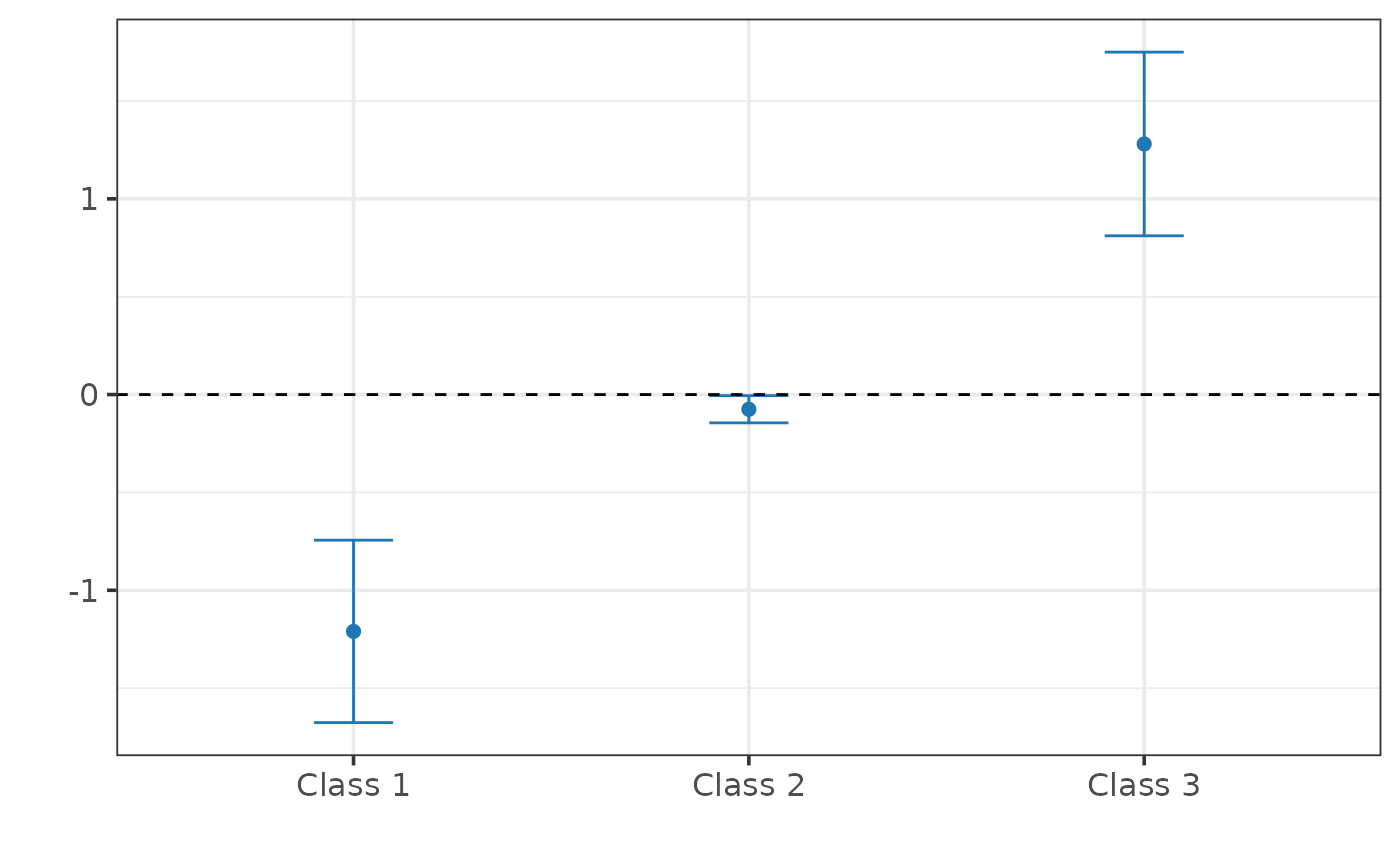Causal Inference for Qualitative Outcomes under Regression Discontinuity
causalQual_rd.RdCausal Inference for Qualitative Outcomes under Regression Discontinuity
causalQual_rd(Y, running_variable, cutoff)Arguments
Value
An object of class causalQual.
Details
Under a regression discontinuity design, identification requires that the probability mass functions for class \(m\) of potential outcomes are continuous in the running variable (continuity). If this assumption holds, we can recover the probability shift at the cutoff for class \(m\):
$$\delta_{m, C} := P(Y_i (1) = m | Running_i = cutoff) - P(Y_i(0) = m | Running_i = cutoff).$$
causalQual_rd applies, for each class \(m\), standard local polynomial estimators to the binary variable \(1(Y_i = m)\). Specifically, the ruotine implements the
robust bias-corrected inference procedure of Calonico et al. (2014) (see the rdrobust function).
References
Di Francesco, R., and Mellace, G. (2025). Causal Inference for Qualitative Outcomes. arXiv preprint arXiv:2502.11691. doi:10.48550/arXiv.2502.11691 .
See also
Examples
## Generate synthetic data.
set.seed(1986)
data <- generate_qualitative_data_rd(100, outcome_type = "ordered")
Y <- data$Y
running_variable <- data$running_variable
cutoff <- data$cutoff
## Estimate probabilities of shift at the cutoff.
fit <- causalQual_rd(Y, running_variable, cutoff)
summary(fit)
#>
#> ── CAUSAL INFERENCE FOR QUALITATIVE OUTCOMES ───────────────────────────────────
#>
#> ── Research design ──
#>
#> Identification: Regression Discontinuity
#> Estimand: Probability Shifts at the Cutoff
#> Outcome type:
#> Classes: 1 2 3
#> N. units: 100
#> Fraction treated units: 0.51
#>
#>
#> ── Point estimates and 95\% confidence intervals ──
#>
#> Class 1: -1.210 [-1.676, -0.744]
#> Class 2: -0.075 [-0.145, -0.006]
#> Class 3: 1.281 [ 0.811, 1.750]
plot(fit)
